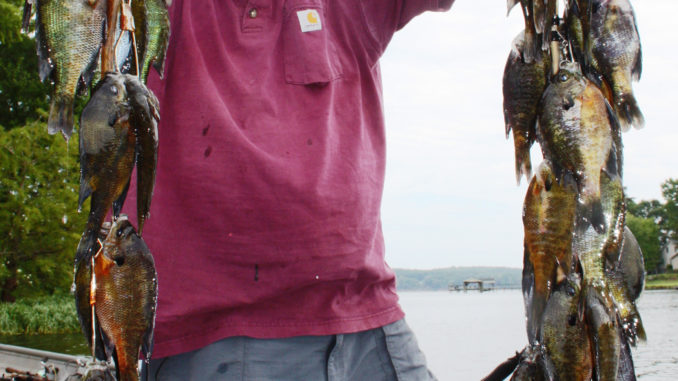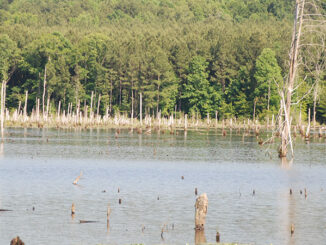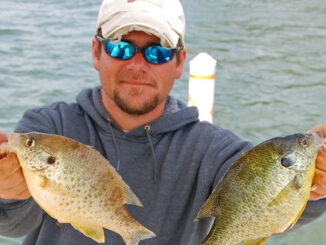
Local expert is putting away big limits with artificials
It’s no surprise to Lake Wateree anglers that bream fishing is great right now. This is the time of year when fish are caught in huge numbers, and with some culling, some excellent limits. Bream are being taken on crickets, worms, Beetle Spins and popping bugs. But when local bream expert Frankie Jacobs hunts these big bream, bull bream discover the jig is up.
“The bream fishing at Lake Wateree is overlooked, and though not all the fish are huge, it’s surprising to some how big the average size can be if you’re willing to cull,” Jacobs said. “And my method actually does some of the culling for me, I fish with a jig and plastic grub for these bream.”
Jacob said using the jig eliminates bites from smaller fish, and even though he’ll still cull, most of the bream are quality fish.
“The jig I prefer is a 1/32-ounce jig with a chartreuse, flat-tail grub that a friend of mine makes for his crappie fishing,” Jacobs said. “The small size of the jig and 4-pound test line enables the jig to fall at just the right speed big bream can’t resist. Big bream hammer the lure so hard it feels like they’ll snatch it right out of my hands. Sometimes they bite so quick I hardly get the bail closed. I use a bright-colored line so I can see if the line twitches or starts moving to the side. The bright color enables me to often see line movement before I feel anything. Being a line watcher is an excellent way to more hookups.”
Jacobs rounds out his gear with ultra-light spinning tackle.
“The jig is so lethal that it actually keeps pace with live bait,” he said. “Fishing with my wife, we found bream beds one morning. She prefers using crickets, deadly for catching bream in the summer. As it usually does, the jig produced just as many fish as live bait and probably a better average size. This is typical whether fish are hard on the beds or scattered around the shoreline. The jig will take bream throughout July, and occasionally a bonus species will have to have a bite of it as well.”
“A roundhead jig with a small grub body works on these fish,’ he said. “The best method is to use the electric motor to slip along the shoreline. I prefer rocky banks with scattered weedbeds that drop into a few feet of water. Cast ahead of the boat, work around any objects such as stumps, logs, weeds or docks. Since I live here, I also know places where fish tend to bed but often I just hunt for new ones using the jig. Bream will often be in very shallow water; they were bedding in less than 18 inches recently. I also swim the jig down to deeper depths when fish are not on the beds and still catch plenty of big bream.
“The bream will bed again on the next full moon, just as they did in June and early July,” Jacobs said. But you don’t have to wait on the full moon to catch a pile of bream on Lake Wateree. Try the jig for bream, watch your line and hold tight to that rod.”




